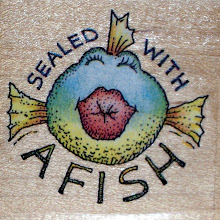 |
Some interesting facts from Whatbird.com
General
Hooded Oriole: Medium-sized, showy oriole with bright orange-yellow head and nape, and black back, face, throat, and upper breast. Bill is slightly decurved. Black wings have two white bars. Tail is black. Female has olive-gray upperparts and yellow-green underparts. Juvenile is similar to female; male may show black on throat.
Range and Habitat
Hooded Oriole: Breeds from central California, Nevada, central Arizona, southern New Mexico, and southern Texas southward. A few spend winters in southern California and southern Texas. Found in deciduous and riparian woodlands and human habitations, often near ranches or towns.
Breeding and Nesting
Hooded Oriole: Three to five white, pale yellow, or pale blue eggs with brown and purple spots are laid in a nest made of leaves and moss, lined with moss, grass, wool, hair, and feathers, and attached to the underside of a leaf or tree branch. Incubation ranges from 12 to 14 days and is carried out by the female.
Foraging and Feeding
Hooded Oriole: Diet consists mostly of fruits, nectar, and insects. Forages in shrubs and trees; uses its pointed bill to pierce flower bases to obtain nectar from agaves, aloes, hibiscus, lilies, and other tubular flowers.
Readily Eats
Suet, Jelly, Orange Halves, Raisins
Vocalization
Hooded Oriole: Song is a series of whistles, chatters, and warbles. Call is an ascending, whistled "wheeat."
Similar Species
Hooded Oriole: Altamira Oriole is larger and has orange shoulders. Bullock's Oriole has white wing patches and black eye-line. Baltimore Oriole has a black head; female is smaller and has shorter tail.
On one site I read that their nest is like a pouch that hangs from the branches of trees. But what was so fascinating for me was that they will puncture the leaves of the trees to push nesting material through; like sewing their nests to the leaves!
















4 comments:
isnt he lovely......beautiful
Shabbygirl...I saw the word Oriole in my thumbnail and had to see it! I love them and we do not have them here...what a beautiful bird and great shot of it.
Also...I watched your slide show...you have a great looking family!
Dan
Thanks Lisa. I looked up the North American identification site but the only Oriole I could find didn't look anything like that one. I had originally assumed it was an Oriole because the European Golden Oriole is not dissimilar.
Really lovely. Thanks for all the facts too. I'm an information hound so I get a kick out of learning new tidbits.
Post a Comment